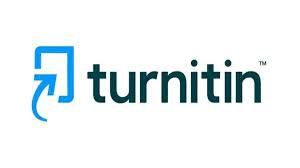Antibacterial Soap from Extract Spent Coffee Grounds using Microwave-assisted Extract Against Staphylococcus aureus
DOI:
https://doi.org/10.32734/jcnar.v7i1.20874Keywords:
Antibacterial Soap, Microwave-Assisted Extraction (MAE), Spent Coffee Grounds (SCG) ExtractAbstract
This study investigates the application of Microwave-Assisted Extraction (MAE) to extract bioactive components from spent coffee grounds (SCG), enhancing the antibacterial properties of transparent soap. Spent coffee grounds, usually regarded as waste, include phenolics, alkaloids, flavonoids, and tannins which demonstrate potent antibacterial properties against Gram-positive bacteria such as Staphylococcus aureus. MAE effectively extracts these useful compounds using ethanol as a solvent, therefore improving the antibacterial power of the soap. Unlike the soap free of the extract, the inclusion of 3% spent coffee ground extract generated an inhibitory zone of 9.16 mm. The soap base is produced using the saponification process with palm oil and sodium hydroxide. The research additionally encompasses pH analysis, foam properties, and evaluations of client preferences. This research highlights the efficiency of MAE in upcycling coffee waste into a functional and sustainable product, offering enhanced antibacterial properties while contributing to waste reduction in personal care products.
Downloads
References
Tampubolon, J., et al., Indonesian Coffee Development Path: Production and International Trade. Asian Journal of Agricultural Extension, Economics & Sociology, 2023. 41(12): p. 316-328.
Prasetya, W., et al., Performance Measurement and Analysis of Coffee Supply Chain With Scor Method (Case Study of North Sumatera Coffee). IJRDO - Journal of Business Management, 2017. 3(11): p. 01-17.
Franca, A.S. and L.S. Oliveira, Chapter 17 - Coffee, in Integrated Processing Technologies for Food and Agricultural By-Products, Z. Pan, R. Zhang, and S. Zicari, Editors. 2019, Academic Press. p. 413-438.
Fornes, F., et al., Assessment of biochar and hydrochar as minor to major constituents of growing media for containerized tomato production. J Sci Food Agric, 2017. 97(11): p. 3675-3684.
Choi, B. and E. Koh, Spent coffee as a rich source of antioxidative compounds. Food Sci Biotechnol, 2017. 26(4): p. 921-927.
Rawangkan, A., et al., Potential Antimicrobial Properties of Coffee Beans and Coffee By-Products Against Drug-Resistant Vibrio cholerae. Front Nutr, 2022. 9: p. 865684.
Díaz-Hernández, G.C., et al., Antibacterial, Antiradical and Antiproliferative Potential of Green, Roasted, and Spent Coffee Extracts. Applied Sciences, 2022. 12(4): p. 1938.
Zamharira, M. and D. Yonaniko, Antibacterial Activity of Robusta Coffee (Coffea canephora L.) Leaves to Staphylococcus aureus and Escherichia Coli. Asian Journal of Pharmaceutical and Clinical Research, 2019. 12(12): p. 113-115.
Djajal, R., et al. Antibacterial Activity of Green Coffee Bean Extract Against Staphylococcus aureus and Salmonella enteritidis. 2018.
Asido, L.T., et al., Antibacterial Activity and Sensory Profile of Liquid Hand Soap from Arabica (Coffea arabica) and Robusta (Coffea canephora) Spent Coffee Grounds. Asian Journal of Biological and Life Sciences, 2024. 13(1): p. 241.
Hibbert, S., K. Welham, and S.H. Zein, An innovative method of extraction of coffee oil using an advanced microwave system: in comparison with conventional Soxhlet extraction method. SN Applied Sciences, 2019. 1(11): p. 1467.
Gligor, O., et al., The Effect of Extraction Methods on Phytochemicals and Biological Activities of Green Coffee Beans Extracts. Plants, 2023. 12(4): p. 712.
Lasunon, P. and N. Sengkhamparn, Effect of Ultrasound-Assisted, Microwave-Assisted and Ultrasound-Microwave-Assisted Extraction on Pectin Extraction from Industrial Tomato Waste. Molecules, 2022. 27(4).
Chaari, M., et al., Microwave-Assisted Extraction of Bioactive and Nutraceuticals, in Bioactive Extraction and Application in Food and Nutraceutical Industries, T. Sarkar and S. Pati, Editors. 2024, Springer US: New York, NY. p. 79-102.
Teo, C.C., W.P.K. Chong, and Y.S. Ho, Development and application of microwave-assisted extraction technique in biological sample preparation for small molecule analysis. Metabolomics, 2013. 9(5): p. 1109-1128.
Coelho, J.P., et al., Microwave-Assisted Extraction of Phenolic Compounds from Spent Coffee Grounds. Process Optimization Applying Design of Experiments. Molecules, 2021. 26(23): p. 7320.
Getachew, A.T., Y.J. Cho, and B.S. Chun, Effect of pretreatments on isolation of bioactive polysaccharides from spent coffee grounds using subcritical water. International Journal of Biological Macromolecules, 2018. 109: p. 711-719.
Syamsul, B., et al., Organoleptic, Moisture and Irritation Tests on Scrubs Based on Coffee Grounds, Aloe Vera, and Liquid Soap Based on Used Cooking Oil, Olive, and Castor. International Journal of Life Science and Agriculture Research, 2024. 3(07): p. 531-536.
Coelho, J.P., et al., Microwave-Assisted Extraction of Phenolic Compounds from Spent Coffee Grounds. Process Optimization Applying Design of Experiments. Molecules, 2021. 26(23).
Ramadhan, M., R. Rendi, and I. Destiana, Karakteristik Fisikokimia dan Antibakteri Sabun Padat dengan Penambahan Ekstrak Kulit Kopi Arabika (Coffea arabica L.). Jurnal Teknotan, 2022. 16: p. 19.
Bouhzam, I., et al., Extraction of Bioactive Compounds from Spent Coffee Grounds Using Ethanol and Acetone Aqueous Solutions. Foods, 2023. 12(24): p. 4400.
Suryanti, E., et al., Chemical Composition, Antioxidant, Antibacterial, Antibiofilm, and Cytotoxic Activities of Robusta Coffee Extract (Coffea canephora). HAYATI Journal of Biosciences, 2023. 30(4): p. 632-642.
Mariana, et al., Activation and characterization of waste coffee grounds as bio-sorbent. IOP Conference Series: Materials Science and Engineering, 2018. 334(1): p. 012029.
Nanda Tsalasani, Z., et al., The Effect of Variation in Solvent Concentration on Caffeine Content in Green Arabica Coffee Bean Extract (Coffea arabica) using UV-Vis Spectrophotometry. Journal of Food and Pharmaceutical Sciences, 2024. 12(3).
Meizalin, A.A. and V. Paramita, Quality Analysis of Liquid Soap Formulation Made from Virgin Coconut Oil with Addition of White Tea Extract. 2021, 2021: p. 5.
García-Roldán, A., L. Piriou, and P. Jauregi, Natural deep eutectic solvents as a green extraction of polyphenols from spent coffee ground with enhanced bioactivities. Frontiers in Plant Science, 2023. 13.
Andrade, C., R. Perestrelo, and J.S. Camara, Bioactive Compounds and Antioxidant Activity from Spent Coffee Grounds as a Powerful Approach for Its Valorization. Molecules, 2022. 27(21).
Mardiah, I., Pemanfaatan Ampas Kopi sebagai Bahan Pembuatan Sabun Batang Organik Metode Cold Process untuk Meningkatkan Produktivitas Komunitas Pemuda Cimahi. Jurnal Abdimas Kartika Wijayakusuma, 2023. 4(2).

Downloads
Published
Issue
Section
License
Copyright (c) 2025 Journal of Chemical Natural Resources

This work is licensed under a Creative Commons Attribution-ShareAlike 4.0 International License.














